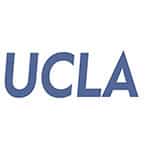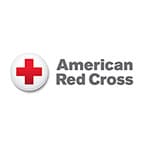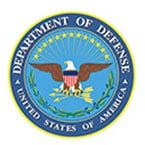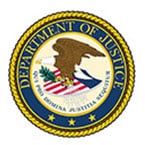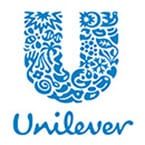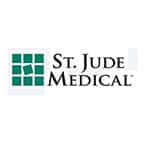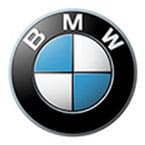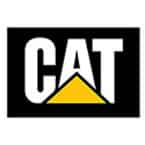Contact us by email at interpreting@alsglobal.net or via phone at 1-800-951-5020 for a free estimate on our ASL and CART services.
Trusted CART & ASL Services in Princeton, NJ
American Language Services has been helping businesses and other entities reach the deaf and hard of hearing community for more than 35 years. While in-person interpreting, at one time, was the only option, recent technological advances opened the door to other options. Since we offer full-service Video Remote Interpreting (VRI), this article will be comparing Virtual American Sign Language (ASL) interpreting with Communication Access Real-Time Translation (AKA- Closed Captioning & Real Time Subtitling) known as CART.
Please note that according to the American Disability Act (ADA) that deaf and hard of hearing community have the legal right to receive full access through the use of ASL and or CART services. The ADA prohibits discrimination against individuals with disabilities and providing ASL interpreters for deaf individuals complies with federal law and promotes equal accessibility.
Some interesting Facts About the City of Princeton
- Princeton, Princeton is a municipality with a borough form of government in Mercer County, New Jersey, United States, that was established in its current form on January 1, 2013, through the consolidation of the Borough of Princeton and Princeton Township. As of the 2010 United States Census, the municipality’s population was 28,572, reflecting the former township’s population of 16,265, along with the 12,307 in the former borough.
- Princeton was founded before the American Revolution and is best known as the location of Princeton University, located in the community since 1756. Although its association with the university is primarily what makes Princeton a college town, other important institutions in the area include the Institute for Advanced Study, Westminster Choir College, Princeton Plasma Physics Laboratory, Princeton Theological Seminary, Opinion Research Corporation, Bristol-Myers Squibb, Siemens Corporate Research, SRI International, FMC Corporation, The Robert Wood Johnson Foundation, Amrep, Church and Dwight, Berlitz International, and Dow Jones & Company.
- Princeton is roughly equidistant from New York City and Philadelphia. It is close to many major highways that serve both cities (e.g., Interstate 95 and US Route 1), and receives major television and radio broadcasts from each. It is also close to Trenton, New Jersey’s capital city, and Edison.
- The governor of New Jersey’s official residence has been in Princeton since 1945, when Morven in the borough became the first Governor’s mansion. It was later replaced by the larger Drumthwacket, a colonial mansion located in the former Township. Morven became a museum property of the New Jersey Historical Society.
- Princeton was ranked 15th of the top 100 towns in the United States to Live and Work In by Money Magazine in 2005.
- Although residents of Princeton (Princetonians) traditionally have a strong community-wide identity, the community had been composed of two separate municipalities: a township and a borough. The central borough was completely surrounded by the township. The Borough seceded from the Township in 1894 in a dispute over school taxes; the two municipalities later formed the Princeton Public Schools, and some other public services were conducted together before they were reunited into a single Princeton in January 2013. The Borough contained Nassau Street, the main commercial street, most of the University campus, and incorporated most of the urban area until the postwar suburbanization. The Borough and Township had roughly equal populations.
- The Lenni Lenape Native Americans were the earliest identifiable inhabitants of the Princeton area. Europeans founded their settlement in the latter part of the 17th century. The first European to find his home in the boundaries of the future town was Henry Greenland. He built his house in 1683 along with a tavern. In this drinking hole representatives of West Jersey and East Jersey met to set boundaries for the location of the township.
- Originally, Princeton was known only as part of nearby Stony Brook. James Leonard first referred to the town as Princetown, when describing the location of his large estate in his diary. The town bore a variety of names subsequently, including: Princetown, Prince’s Town and finally Princeton. Although there is no official documentary backing, the town is considered to be named after King William III, Prince William of Orange of the House of Nassau. Another theory suggests that the name came from a large land-owner named Henry Prince, but no evidence backs this contention. A royal prince seems a more likely eponym for the settlement, as three nearby towns had similar names: Kingston, Queenstown (in the vicinity of the intersection of Nassau and Harrison Streets) and Princessville (Lawrence Township).
- When Richard Stockton, one of the founders of the township, died in 1709 he left his estate to his sons, who helped to expand property and the population. Based on the 1880 United States Census, the population of the town comprised 3,209 persons (not including students). Local population has expanded from the nineteenth century. According to the 2010 Census, Princeton Borough had 12,307 inhabitants, while Princeton Township had 16,265. The numbers have become stagnant; since the establishment of Princeton University in 1756, the town’s population spikes every year during the fall and winter and drops significantly over the course of the summer.
- Aside from housing the university of the same name, the settlement suffered the revolutionary Battle of Princeton on its soil. After the victory in 1777, the town hosted the first Legislature under the State Constitution of New Jersey to decide the State’s seal, Governor and organization of its government. In addition, two of the original signers of the Declaration of Independence—Richard Stockton and John Witherspoon lived in Princeton. Princetonians honored their citizens’ legacy by naming two streets in the downtown area after them. On January 10, 1938 Henry Ewing Hale called for a group of citizens to discuss opening a “Historical Society of Princeton.” Later the Bainbridge House would be dedicated for this purpose. Previously the house was used once for a meeting of Continental Congress in 1783, a general office and as the Princeton Public Library. The House is actually property of Princeton University and is leased to the Princeton Historical Society for one dollar per year. The house has kept its original staircase, flooring and paneled walls. Altogether, 70% of the house has been unaltered. Aside from safety features like wheelchair access and electrical work, the house was merely restored to its original look.
- During the most stirring events in its history, Princeton was a wide spot in the road; the boundary between Somerset County and Middlesex County ran right through Princeton, along the high road between New York and Philadelphia, now Nassau Street. When Mercer County was formed in 1838, part of West Windsor Township was added to the portion of Montgomery Township which was included in the new county, and made into Princeton Township; the area between the present borough line and the Delaware and Raritan Canal was added to Princeton Township in 1853. Princeton Borough became a separate municipality in 1894.
- In the early nineteenth century, New Jersey boroughs had been parish bodies, chartered within existing townships. Princeton Borough received such a charter in 1813, as part of Montgomery and West Windsor Townships; it continued to be part of Princeton Township until the Act of 1894, which required that each township form a single school district; rather than do so, Princeton Borough petitioned to be separated. (The two Princetons now form the Princeton Public Schools.) Two minor boundary changes united the then site of the Princeton Hospital and of the Princeton Regional High School inside the Borough, in 1928 and 1951 respectively.
- According to the United States Census Bureau, Princeton has a total area of 18.363 square miles (68.041 km2), including 17.932 square miles (46.444 km2) of land (97.65%) and 0.431 square miles (1.115 km2) of water (2.35%).
- Cedar Grove, Port Mercer, North Princeton, Princeton Basin, and Jugtown are unincorporated communities that have been absorbed into Greater Princeton over the years, but still maintain their own community identity.
- Like most of the Northeastern United States, Princeton has a humid continental climate, and generally sees cold winters and hot, humid summers. According to Weather.com, the lowest recorded temperature in Princeton was −16 °F (−27 °C) on January 28, 1935, and the highest record temperature was 105 °F (41 °C) on July 9, 1936.
- As of May 2010, the borough had a total of 126.95 miles (204.31 km) of roadways, of which 118.36 miles (190.48 km) were maintained by the municipality, 3.93 miles (6.32 km) by Mercer County, and 8.66 miles (13.94 km) by the New Jersey Department of Transportation. U.S. Route 206 and New Jersey Route 27 pass through Princeton, along with County Routes 583, 571 (commonly known as Washington Road) and 533.
- Princeton is roughly equidistant from New York City and Philadelphia. Since the 19th century, it has been connected by rail to both of these cities by the Princeton Branch rail line to the nearby Princeton Junction Station on Amtrak’s Northeast Corridor. The Princeton train station was moved from under Blair Hall to a more southerly location on University Place in 1918, and was moved further southeast in 2013. Commuting to New York from Princeton became commonplace after the Second World War. While the Amtrak ride time is similar to New York and to Philadelphia, the commuter-train ride to New York — via NJ Transit’s Northeast Corridor Line — is generally much faster than the equivalent train ride to Philadelphia, which involves a transfer to SEPTA trains in Trenton. NJ Transit provides shuttle service between the Princeton and Princeton Junction stations; the train is locally called the “Dinky”, and has also been known as the “PJ&B” (for “Princeton Junction and Back”). Two train cars, or sometimes just one, are used.
- Princeton was the setting of the Academy Award-winning A Beautiful Mind about the schizophrenic mathematician John Nash. It was largely filmed in central New Jersey, including some Princeton locations. However, many scenes of “Princeton” were actually filmed at Fordham University’s Rose Hill campus in the Bronx.
- The 1994 film I.Q., featuring Meg Ryan, Tim Robbins, and Walter Matthau as Albert Einstein, was also set in Princeton, and was filmed in the area. It includes some geographic stretches, including Matthau looking through a telescope from the roof of “Princeton Hospital” to see Ryan and Robbins’ characters kissing on the Princeton Battlefield.
- Historical films which used Princeton as a setting but were not filmed there include Wilson, a 1944 biographical film about Woodrow Wilson.
- In his 1989 independent feature film Stage Fright, independent filmmaker Brad Mays shot a drama class scene in the Princeton High School auditorium, using PHS students as extras. On October 18, 2013, Mays’ feature documentary I Grew Up in Princeton had its premiere showing at Princeton High School. The film, described in one Princeton newspaper as a “deeply personal ‘coming-of-age story’ that yields perspective on the role of perception in a town that was split racially, economically and sociologically”, is a portrayal of life in the venerable university town during the tumultuous period of the late sixties through the early seventies.
- Scenes from the beginning of Across the Universe (film) (2007) were filmed on the Princeton University campus.
- Parts of Transformers: Revenge of the Fallen were filmed in Princeton. Megan Fox and Shia LaBeouf were filming on Princeton University campus for two days during the summer of 2008.
- The 1938 Orson Welles radio broadcast of The War of the Worlds, is set partly in nearby Grover’s Mill, and includes a fictional professor from Princeton University as a main character, but the action never moves directly into Princeton.
- The TV show House was set in Princeton, at the fictional Princeton-Plainsboro Teaching Hospital, and establishing shots for the hospital display the Frist Campus Center of Princeton University. The actual University Medical Center of Princeton at Plainsboro opened on May 22, 2012, exactly one day after the finale of House aired.
- F. Scott Fitzgerald’s literary debut, This Side of Paradise, is a loosely autobiographical story of his years at Princeton University.
- Princeton University’s Creative Writing program includes several nationally and internationally prominent writers, making the community a hub of contemporary literature.
- Many of Richard Ford’s novels are set in Haddam, New Jersey, a fictionalized Princeton.
- Joyce Carol Oates’ 2004 novel Take Me, Take Me With You (written pseudonymously as Lauren Kelly) is set in Princeton.
- New Jersey author Judy Blume set her novel Superfudge in Princeton.
Reference Sources: Kiddle Encyclopedia
Princeton ASL & CART Language Interpreters
American Language Services is known for our high-quality, In-person and Virtual interpreters, as well as the outstanding client services we provide. We work in 200+ languages including Legal and Medical Certified and Qualified. ASL and CART are the fastest growing languages in Princeton today a language interpreter can be a very underestimated professional in the world today. There are over 100 languages spoken in the Princeton Metro area alone. Many of us know one language, and we specialize in one field of study. Our Princeton Interpreters are fluent in English and at least one other language, and they are knowledgeable in a wide range of specialized fields including legal, medical, technical, manufacturing, and engineering.
A brief history of ASL Interpreting in Princeton
Most people know that ASL stands for American Sign Language. But not everyone knows that it is a distinct language—not simply an offshoot of American English. Though its beginnings are murky, many believe that ASL originated from a merger of French Sign Language (SLF) and local U.S. sign languages. While ASL and SLF are distinct languages, there are still some similarities between their signs.
What actually is ASL? ASL a complete, natural language that has the same linguistic properties as spoken languages with grammar however that differs from English. ASL is expressed by movements of the hands and face. ASL is a language completely separate and distinct from English. It contains all the fundamental features of language, with its own rules for pronunciation, word formation, and word order. Because of the physical nature of ASL, a two-person team of ASL interpreters is required for assignments longer than 1 hour in duration.
The National Center for Health Statistics claims that 28 million Americans have some degree of hearing loss, though only between two and eight percent of them are natural ASL speakers. Helping these select individuals translate the audible into the understandable is the job of an ASL interpreter. If you have ever been to a play, a concert or watched a government briefing, you have probably seen an ASL interpreter signing just out of view. An interesting side note is that Statista estimates that there are currently around 60,000 active ASL interpreters in the USA.
The Benefits of ASL Interpreting in Princeton
When it comes to communicating with hard-of-hearing or deaf audiences, there are a few reasons you might want to opt for a Princeton ASL interpreter over CART services. These include:
- A More Personal Connection: A real person has several advantages over a computer screen. First, human interpreters have an easier time conveying emotion. Second, they are better equipped to point out speakers and assist with pronunciation issues. Finally, an interpreter gives a deaf or hard of hearing person a chance to bond with another person.
- Enhanced Speed: Skilled interpreters can hold pace with even the fastest speakers. Lack of delay makes it easier for deaf and hard of hearing individuals to keep up with the conversation.
- Cost Effective: While costs range by the type of ASL you need (Legal, medical, business, etc.) and when the assignment is scheduled, the cost off ASL, across the board, is less money than CART.
What Is CART?
While the majority of people know what American Sign Language is, the same cannot be said for Communication Access Real-Time Translation. Often referred to as CART, this communication method for the deaf and hard of hearing is best described as subtitling for live discussions. Unlike ASL, which relies on a professional interpreter, CART services are provided by a well-trained stenographer or transcriptionist. They transcribe anything said and then broadcast the resulting text to a phone, computer, or TV screen.
CART is often seen as a cost-effective and efficient way to ensure everybody can follow along. While often used to help deaf students in the classroom, CART captioning benefits anyone that can read. Much like ASL interpreting, it can be done both onsite with a physical transcriptionist or remotely with an offsite one.
Why You Should Consider CART for the Princeton Market
Communication Access Real-Time Translation is growing in popularity due to the following characteristics:
- It Serves a Wider Array of Deaf People: If you do a little math, you will realize that 65 percent of hard-of-hearing people in the USA do not speak ASL fluently. CART makes it so these people can join in on the conversation as well.
- CART Makes It Scalable: While people in the front rows can easily make out what an interpreter is signing, it gets harder as the distance increases. Since captions can be beamed to multiple screens simultaneously, they do not have to factor speaker distance into the equation.
- The Text Provides a Written Record: Having a transcript of everything your professor said would be a godsend come finals. Having a record of a meeting can also provide clarity to all those involved as well. The physical nature of CART recording makes that possible. This ability is one reason so many college students opt for CART over traditional ASL interpreting.
About American Language Services
Founded in 1985, American Language Services was there to help pioneer the rise in remote ASL interpreting options. Our dedication to quality and client satisfaction in interpreting allowed us to shift from a one-woman agency into one of the most successful language agencies in the world. Our language experts provide ASL & CART interpreting services to people all around the world. Because of our 24/7 availability, you’ll never have to worry about us not being available, on off times, for an assignment.
AML-Global has some of the most impressive linguistic talents in the world. These highly skilled language professionals are recruited, screened, and tested to ensure high-quality work.
Contact us by email at interpreting@alsglobal.net or via phone at 1-800-951-5020 for a free estimate on our ASL and CART services.




